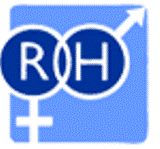
Abstract (provisional)
Background
India launched a national conditional cash transfer program, Janani Suraksha Yojana (JSY), aimed at reducing maternal mortality by promoting institutional delivery in 2005. It provides a cash incentive to women who give birth in public health facilities. This paper studies the extent of program uptake, reasons for participation/ non participation, factors associated with non uptake of the program, and the role played by a program volunteer, accredited social health activist (ASHA), among mothers in Ujjain district in Madhya Pradesh, India.
Methods: A cross-sectional study was conducted from January to May 2011 among women giving birth in 30 villages in Ujjain district. A semi-structured questionnaire was administered to 418 women who delivered in 2009. Socio-demographic and pregnancy related characteristics, role of the ASHA during delivery, receipt of the incentive, and reasons for place of delivery were collected. Multinomial regression analysis was used to identify predictors for the outcome variables; program delivery, private facility delivery, or a home delivery.
Results: The majority of deliveries (318/418; 76%) took place within the JSY program; 81% of all mothers below poverty line delivered in the program. Ninety percent of the women had prior knowledge of the program. Most program mothers reported receiving the cash incentive within two weeks of delivery. The ASHA’s influence on the mother’s decision on where to deliver appeared limited. Women who were uneducated, multiparious or lacked prior knowledge of the JSY program were significantly more likely to deliver at home.
Conclusion: In this study, a large proportion of women delivered under the program. Most mothers reporting timely receipt of the cash transfer. Nevertheless, there is still a subset of mothers delivering at home, who do not or cannot access emergency obstetric care under the program and remain at risk of maternal death.